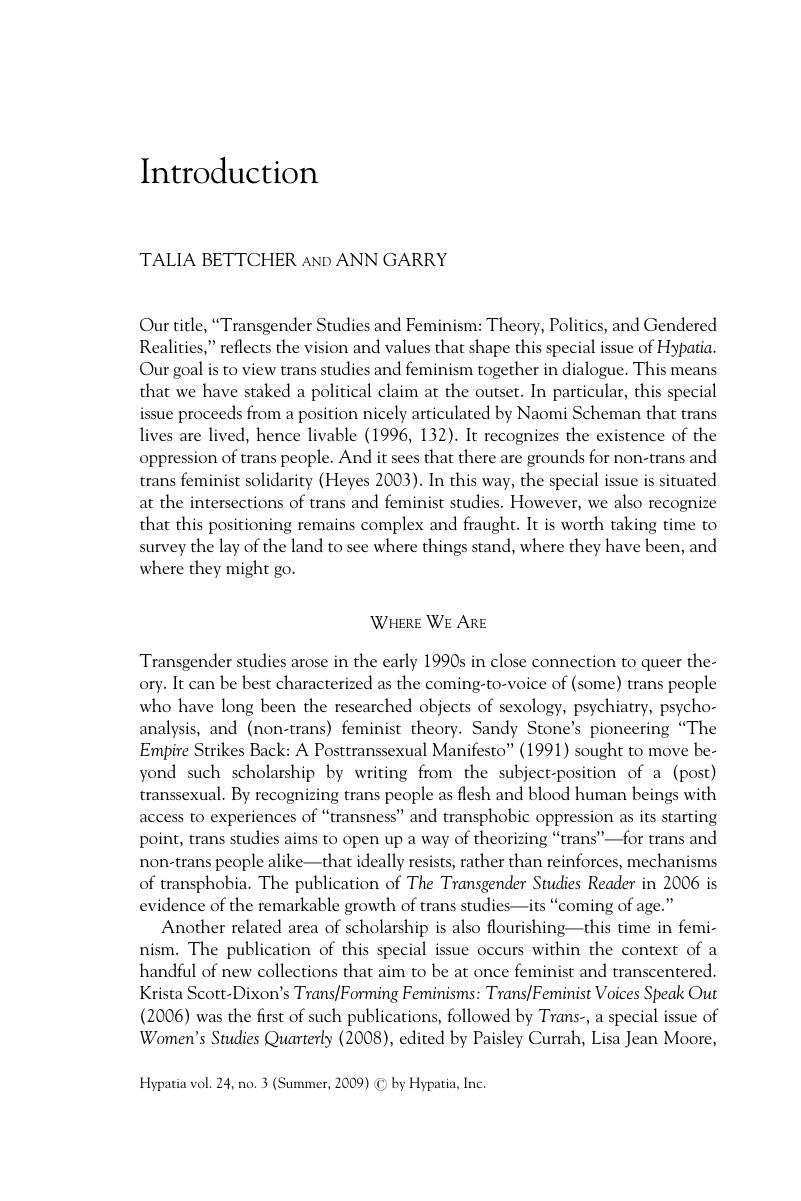Crossref Citations
This article has been cited by the following publications. This list is generated based on data provided by Crossref.
Ball, Matthew
2016.
Criminology and Queer Theory.
p.
107.
Irni, Sari
2017.
On the Materialization of Hormone Treatment Risks.
Body & Society,
Vol. 23,
Issue. 2,
p.
106.
Martínez, Juliana
2017.
Beyond Diversity Ventriloquism: HowMujer TIs Transing Inclusion in Bogotá.
Hypatia,
Vol. 32,
Issue. 3,
p.
679.
O’Shea, Saoirse Caitlin
2018.
This girl’s life: An autoethnography.
Organization,
Vol. 25,
Issue. 1,
p.
3.
Baumgartinger, Persson Perry
2018.
Trans Studies und Feminismen – Reibungen, Brüche ...und Allianzen?.
FEMINA POLITICA - Zeitschrift für feministische Politikwissenschaft,
Vol. 27,
Issue. 2-2018,
p.
143.
Enke, Finn
2018.
Collective Memory and the Transfeminist 1970s.
TSQ: Transgender Studies Quarterly,
Vol. 5,
Issue. 1,
p.
9.
Espineira, Karine
and
Thomas, Maud-Yeuse
2019.
Études TransInterroger les conditions de production et de diffusion des savoirs.
Genre, sexualité et société,
Radi, Blas
2019.
On Trans* Epistemology.
TSQ: Transgender Studies Quarterly,
Vol. 6,
Issue. 1,
p.
43.
Saeidzadeh, Zara
and
Strid, Sofia
2020.
Trans* Politics and the Feminist Project: Revisiting the Politics of Recognition to Resolve Impasses.
Politics and Governance,
Vol. 8,
Issue. 3,
p.
312.
Gambino, Elena
2021.
Politics as ‘Sinister Wisdom’: Reparation and responsibility in lesbian feminism.
Contemporary Political Theory,
Vol. 20,
Issue. 3,
p.
524.
Mazzuca, Claudia
and
Santarelli, Matteo
2023.
Making it abstract, making it contestable: politicization at the intersection of political and cognitive science.
Review of Philosophy and Psychology,
Vol. 14,
Issue. 4,
p.
1257.
Martin, Paula
2024.
A “hard question”: Gender affirming care and gender distress in a social world.
Feminist Anthropology,
Vol. 5,
Issue. 2,
p.
293.


